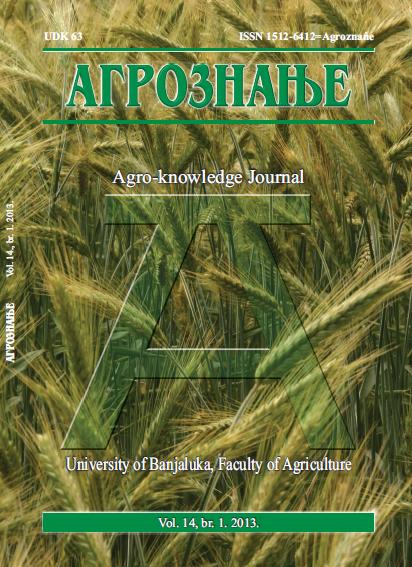Characteristics of Common Bean Mutant Lines and Cultivars Grown under Rainfed and Irrigated Conditions
DOI:
https://doi.org/10.7251/AGREN1301029KAbstract
The experiments were conducted in the field of Agricultural University in Plovdiv, Bulgaria. A standard method was applied for cultivation in 5 replicates. Biometric evaluation of common bean (Phaseolus vulgaris L.), 10 mutant lines and 10 varieties, grown under rainfed and irrigated conditions was conducted. Main traits, associated with productivity in common bean: plant height, mass of plants with pods, number of branches, height of the first pod, number of fruit branches, number of pods per plant, weight of pods with seeds, number of seeds per plant, weight of seeds and average length per 10 pods were characterised. Stronger degree of variation in studied traits was observed in genotypes grown under irrigated conditions. It was found that the studied Bulgarian varieties are promising in terms of germoplasm for their introduction in hybridisation breeding schemes as well as in application of mutagenesis and biotechnological practices. D2-0,0125 M EMS mutant line (6) has the best manifestation of the studied traits among other mutant lines and it may be included in breeding schemes for evaluation as a new cultivar. BAT 477 cultivar (20) differs significantly by its traits from other genotypes, irrespective of the cultivation mode.Downloads
Published
2013-11-15
Issue
Section
Articles

